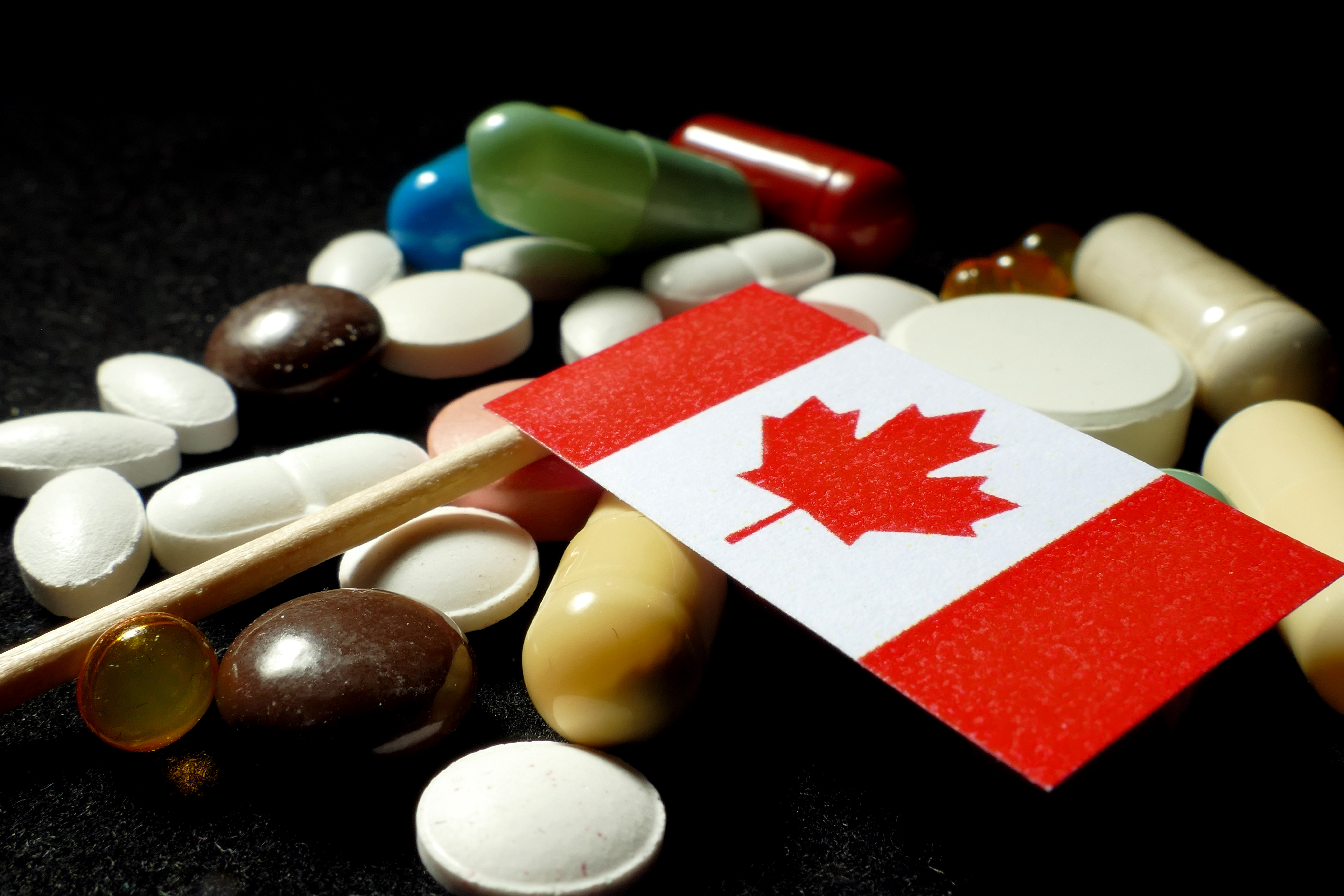Recommended
Let’s start with a brief thought experiment. Imagine, for a moment, that you are an American, visiting some family in Canada. You’re having a great time, so you decide to extend your trip by a week. But after changing your flight, you realize that you only have three days’ worth of your prescription medication left. The exact drug doesn’t matter here—just imagine you need it, and you can’t go four days without it.
You might worry about the cost of obtaining the drug, because you’re not covered by local insurance. But let’s say it’s a generic medicine, so the cost probably won’t be prohibitive. You might worry about whether the medicine is even available in Canada at all—but let’s say it’s a widely used essential medicine, stocked in every Canadian pharmacy.
But, of course, you can’t just walk into the pharmacy and buy it. To get your medicine, you somehow need to obtain a valid prescription from a Canadian doctor. And figuring out how to do that in time, at affordable cost, just became the key barrier to accessing your needed medicine.
“Stewardship” applies to non-antimicrobial drugs, too
Many people reading this blog will be familiar with the concept of “stewardship” as applied to antibiotics and other antimicrobials; though there’s no authoritative definition, the word typically applies to policies and other measures intended to promote their responsible use, prevent overuse, and otherwise conserve their efficacy. On this last dimension, antimicrobials are indeed distinct from all other medicines: no other drug classes become less (globally) effective with increased use. And the imperative to protect antimicrobial efficacy can sometimes sit in tension with the simultaneous need for widespread access, as millions continue to die each year from antimicrobial-treatable diseases.
But as the thought experiment above shows, the idea of controlling medicines extends well beyond just antibiotics. Prescription requirements, like those considered above, represent just one of many government-imposed controls on medicines; that is, they are among the set of policies that in some way restrict or seek to guide the free sale, use, exchange, import, or production of pharmaceutical and other health products. These controls are often imposed for very good reason. Yet like our American abroad is now realizing, they too can have access costs, because by their very nature they impose additional barriers to obtaining medications.
In a new paper, we argue that the idea of “stewardship”—and the tension between some stewardship policies and patient access—extends well beyond antimicrobials, to all drug classes. We consider the many reasons why governments opt to impose controls on medicines, and how rationales for control relate to specific drug properties and specific local contexts. We try to catalogue and contextualize the range of nonmonetary controls on medicines that are ubiquitous, widely accepted, and only rarely called into fundamental question, and we consider their profound implications for how we all use and access medicines. Finally, we suggest that there may be some lessons to learn for better policy here—both for antimicrobials specifically, and for all medicines that we rely on.
Governments legally control medicines in many ways, for many (often good!) reasons
If antimicrobials, alone, are at risk of losing societal efficacy, why do regulators care about restricting sale or use of other drugs? As it turns out, there are many different reasons. In most cases, we find that the rationale is related to the patient’s perceived “own good”—for example, to promote effective diagnosis; ensure medicines are safe, effective, and appropriately indicated for the patient’s medical needs; to prevent adverse effects including addiction, side effects, drug interactions, or toxicity; and to limit the likelihood of use in suicides. But there are exceptions. Some controls are at least partially motivated by concerns about drugs’ broader effects on society, for example collateral damage from impairment or psychoactive effects; or potential for diversion to recreational uses. Others are imposed from the perspective of a budget holder, to prevent unnecessary use (and related expense!), and therefore save the health system money. And in yet other cases, substances can be controlled because of social disapproval, for example contraception, marijuana, or medical abortion.
Likewise, the toolbox of potential controls on medicine is very, very large in range and scope, even when we exclude monetary and price tools like taxes/subsidy, price controls, and insurance coverage decisions. Regulators can prevent drugs from being sold altogether through restrictive approval processes or criminalization; require drugs to only be dispensed in certain settings and/or with approval from authorized health professionals; require reporting of all drug use/prescriptions to a centralized database; control the maximum volume of drugs sold at any given time; specify how drugs are packaged and labeled; and hold health providers legally or financially responsible for poor prescribing decisions. They can also regulate how and whether the drug industry advertises to or interacts with patients and physicians.
These controls can be blunt tools if imposed without care; they can also be carefully calibrated and tailored to the specific cost-benefit calculus of any given drug, within any specific national or subnational setting. In our paper, we argue that a sensitive touch and careful analysis is desperately needed, because…
Controls on medicine also meaningfully reduce access
Almost all controls on medicine make it, in some way, more challenging to access medicines. This is true even in cases where the control(s) on medicines are absolutely justified, but of course more concerning if they are not. We see evidence of this fundamental fact across the academic literature—and also in our own lived experiences.
Consider, for example, the popularity of pharmacies in tourist destinations across the Caribbean and Mexico, which often advertise free access to medicines that would require a prescription in the US (e.g., antibiotics, steroids, or benzodiazephines). Consider the ads on your favorite podcasts, which tout easy online prescribing of drugs for hair loss, erectile disfunction, acne, or birth control. Consider the $100 co-pay to see your doctor for a refill on your routine prescription. This is all real-world evidence that controls on medicine artificially reduce use of medicines below the levels dictated by pure supply and demand—in turn fueling entire cottage industries that can profit from the arbitrage opportunity. And while foregoing a hair loss drug is far less consequential than discontinuing a lifesaving therapy, the same basic principles apply—easier access will increase the proportion of eligible patients who successfully access an indicated medicine from which they would benefit.
To be very clear, we are not arguing that these services necessarily are “good” in an absolute sense, as they may in some cases promote inappropriate use. We are certainly not arguing that free, unrestricted access to all drugs would be a good thing. Benzodiazephines, for example, are extremely addictive, and thus tightly controlled in the US and Europe for very good reason. But the access costs of controls are real, and sometimes large—and they need to be carefully considered by policymakers when such control measures are put into effect.
Balancing access with stewardship is a delicate tightrope
Put together, our analysis suggests that regulators have both great power and great responsibility. They can deploy a vast and powerful suite of tools to control medicines and promote responsible use, which is an enormously important task. Yet those same tools, used without due consideration of unintended effects, can choke off access to desperately needed drugs, in turn limiting people’s lifespan and/or quality of life.
Given the challenge of balancing access with stewardship, our paper offers a few high-level lessons for antibiotics, specifically. We suggest that policymakers calibrate controls across the WHO’s AWaRe categories, with more stringent controls on Reserve antibiotics, and a more liberalized approach to the Access category. We point to prescription policy and mandatory databases as useful and applicable policy levers for antibiotic stewardship, which can be calibrated across different antibiotic categories to mitigate the harms of access restrictions.
More broadly, we offer some general recommendations to policymakers and regulators during the policy formulation and review process. We think rigorous cost-benefit analysis is needed to determine the appropriate level of controls on new medicines—and that those controls should be regularly reviewed and considered for modification, particularly when there is high unmet societal need. We also urge policymakers to evaluate whether controls on medicine are indeed fulfilling their intended purpose in terms of improved safety, diagnosis, and so forth.
You can read the whole paper here.
Disclaimer
CGD blog posts reflect the views of the authors, drawing on prior research and experience in their areas of expertise. CGD is a nonpartisan, independent organization and does not take institutional positions.
Image credit for social media/web: BillionPhotos.com / Adobe Stock







